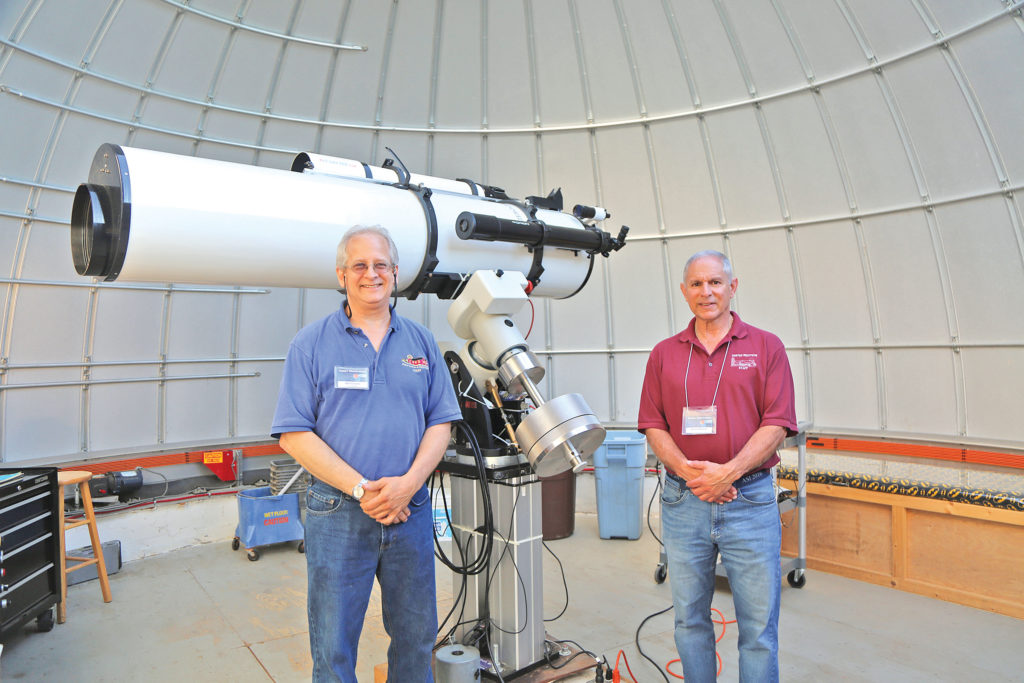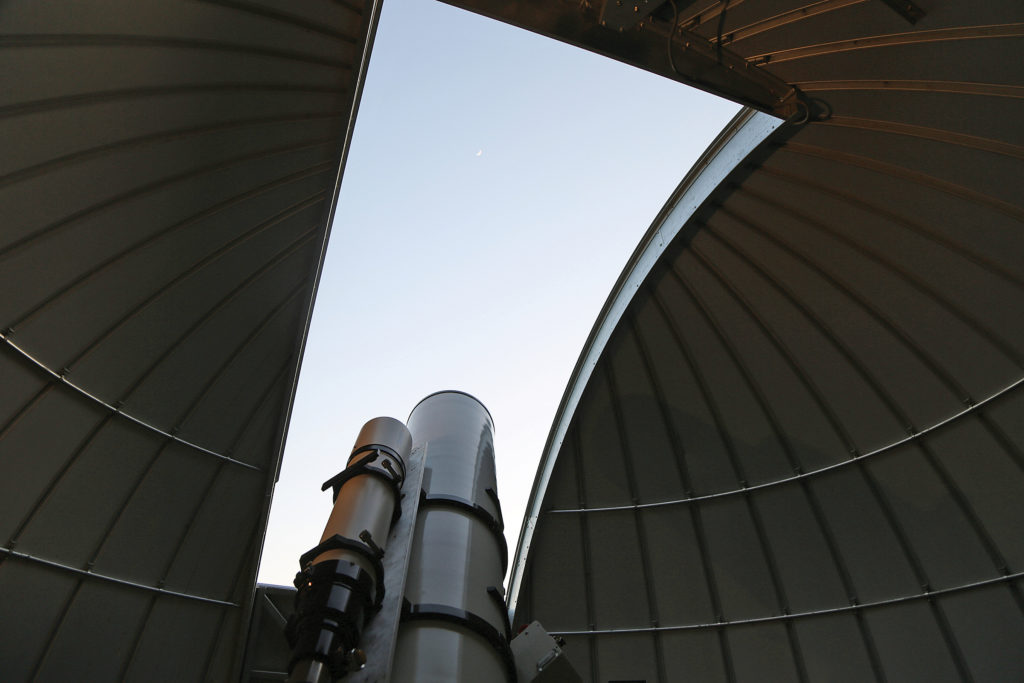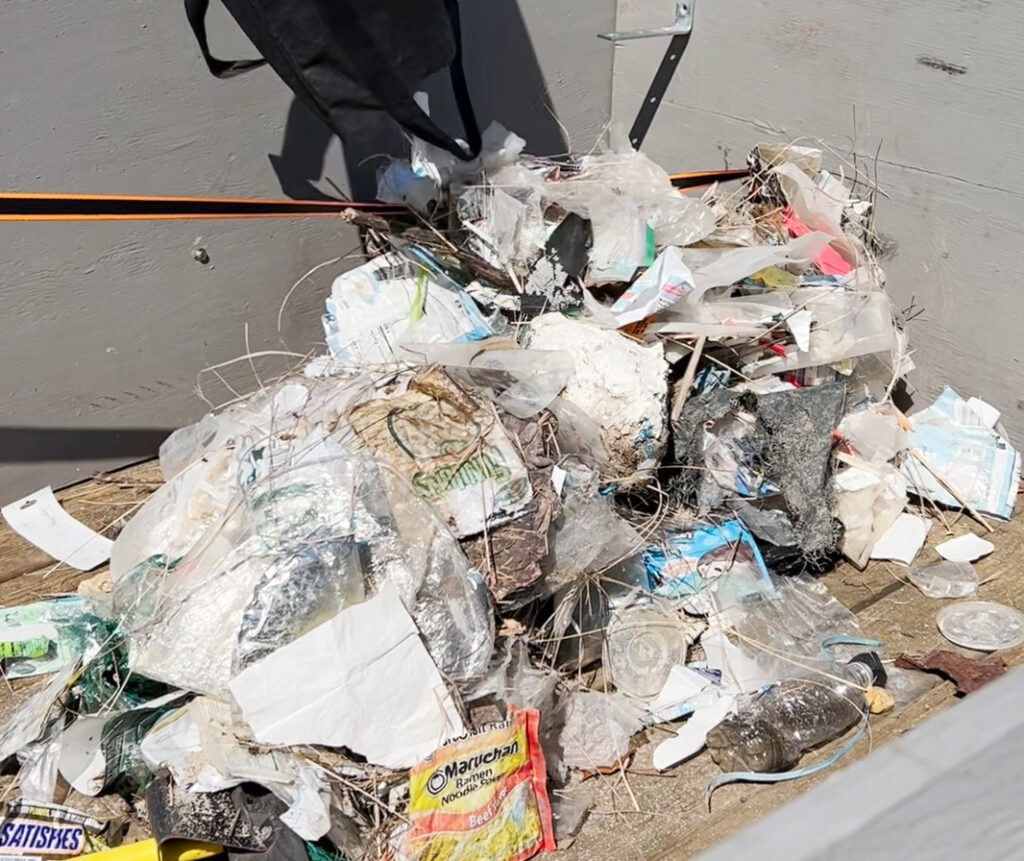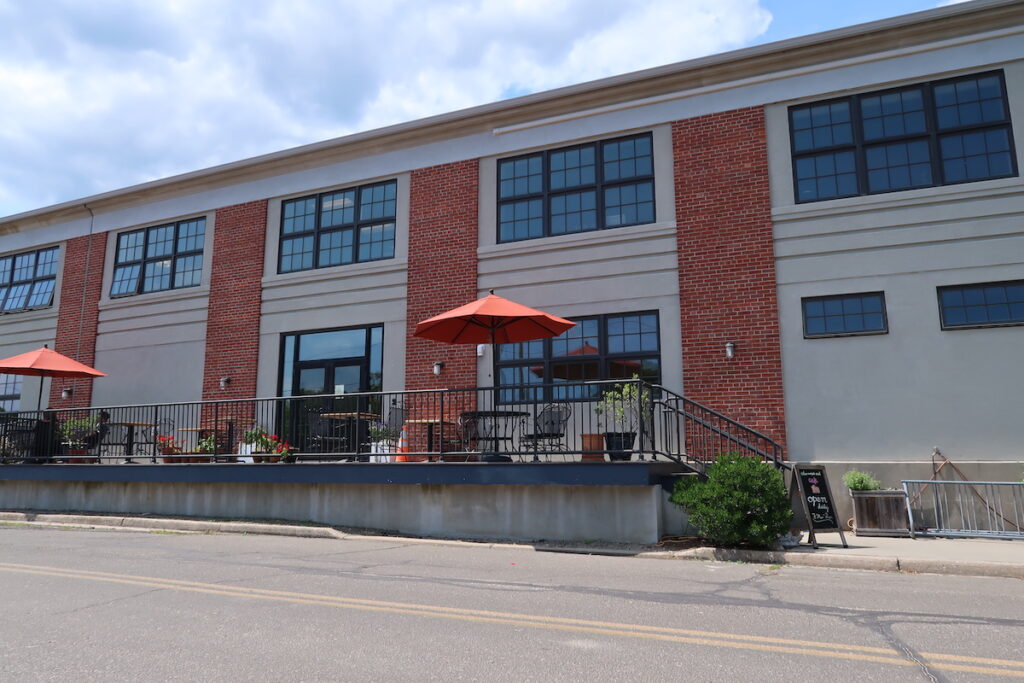Preserving the night sky on the North Fork
A passionate group of local volunteers aims to curb light pollution in Southold Town. Awareness is the key to success and they want their neighbors to know anyone can make a difference.

If anyone has astronomy in their blood, it’s Anne Spooner.
Her father is an amateur telescope maker who dragged her to Southold’s Custer Institute on weekends. Some of the posters and photos papering the walls of a shed behind the observatory, which stores several high-powered telescopes — including one made by her father — depict Anne as a child.
“When I was a kid, I used to easily be able to see the Milky Way galaxy from my home,” she said. “I still live in the same house that I grew up in. I live in Calverton, near where the Tanger mall is, and now you really can’t see much of anything. I can see the planets in the sky, but that’s about it. There’s a lot that has changed.”
In recent years, according to local environmentalists, the North Fork has been bombarded with a wave of light pollution brought on by increased development and an influx of new residents — despite legislation meant to protect against it. Light pollution is harmful to both the environment and human health and obscures the stars.
“Unlike a lot of different forms of pollution, this is one that you can so easily start doing something about.”
Marina DeLuca, Group for the East End
Ms. Spooner is now president of Custer Institute, which has partnered with the North Fork Dark Sky Coalition to protect a dark sky and perhaps reverse some of the damage that’s been done. The coalition, organized in 2020 by local civic leaders and concerned citizens, has spent the past few years focused on raising awareness about light pollution and the town code meant to prevent it.
“The dark sky is an often overlooked natural resource. We take it for granted. And now, with all these bright lights, urban light pollution, it’s really taking all the stars and the planets away from us,” said coalition chair Laura Klahre. “We’ve taken away so much from the generations that are up and coming. And now we’re taking away their sky.”
Light pollution in Southold
VIDEO BY TARA SMITH
More than 80% of the world and more than 99% of the U.S. and Europe live under light-polluted skies, according to a 2016 study published in Science Advances, a peer-reviewed journal published by the American Association for the Advancement of Science. Nearly 80% of North Americans can’t see the Milky Way.
Many North Fork coalition members argue that even in Southold — considered a stargazing destination on Long Island — recent years have brought a noticeable increase in light pollution.
“It’s another form of pollution,” Marina DeLuca of Group for the East End explained. “But unlike a lot of different forms of pollution, this is one that you can so easily start doing something about.”
Ms. DeLuca is a founding member of the North Fork Dark Sky Coalition, one of several Southold residents leading the charge to protect town residents’ view of the night sky. And while she’s passionate about protecting the environment, this fight for her is personal.
A lifelong resident of East Marion, Ms. DeLuca recalls an idyllic childhood of night swimming, playing in the woods and gazing up at a sky bright with stars. When she came home from college a few years ago, she was shocked to find her formerly dark, quiet neighborhood lit up like a Christmas tree, with the brightest lights coming from empty homes.
It’s not a change that happened all at once. A new neighbor comes in. Maybe they add another light to their porch. No big deal, right?
“But all of a sudden, now your whole street has all these lights on all night and you start to lose your view of the stars, and you start to lose these pieces that make this area so magical,” she said. One trend activists have pointed out as particularly harmful is the uplighting of trees and signs — a practice that’s against code in Southold Town.
On a trip upstate last spring, coalition member Steven Bellavia found that Cold Spring Lodge in the Catskills is almost 2.5 times darker than Custer Institute in Southold, where he’s also a volunteer.
He gathered the data on a two-night trip to a spot he had found two years earlier on dark sky maps, using a Sky Quality Meter each night to measure the brightness of the sky.
He backed up the data with a telescope and camera to perform a “quantitative comparison of the sky darkness/brightness” in Southold and the Catskills, he wrote in an analysis. The settings were all identical and weather and sky conditions, he reported, “were excellent in both locations for several days in a row.”
“In Southold, you could easily see that the sky got progressively brighter as the object moved further west and down into the glow of Mattituck and Riverhead. Whereas [at Cold Spring Lodge], there was no change in sky brightness at all for the entire night,” Mr. Bellavia said in the analysis.
Light pollution matters
Besides inhibiting the view for astronomers, artificial light can be incredibly disruptive for nocturnal animals. It can disturb the nighttime croaking that’s part of mating rituals for amphibians like frogs and toads, or throw off hunting and migration patterns for birds that navigate at night.
“The introduction of artificial light probably represents the most drastic change human beings have made to their environment,” the International Dark Sky Association writes, crediting researcher Christopher Kyba.
“Predators use light to hunt and prey species use the darkness as cover,” the association continues. “Near cities, cloudy skies are now hundreds or even thousands of times brighter than they were 200 years ago. We are only beginning to learn what a drastic effect this has had on nocturnal ecology.”
Blue-white light that resembles sunlight can also distract nighttime pollinators such as moths, which are critical for a town with an economy reliant on farms and wineries, drawing them away from nearby flora. And while LED lights may be more energy efficient, they produce additional blue light, which is more easily scattered in Earth’s atmosphere than other colors, increasing light pollution. Switching to amber light, which has a longer wavelength insects can’t see, is an easy fix.
Too much light at night is harmful to people, too. Overexposure to artificial light at night can suppress production of the hormone melatonin and interfere with circadian rhythm, our biological clock.
“We’ve spent five million years evolving as a species of light in the day and dark at night,” Mr. Bellavia said. “When you start taking that away, our bodies weren’t designed for that and it can cause problems.”
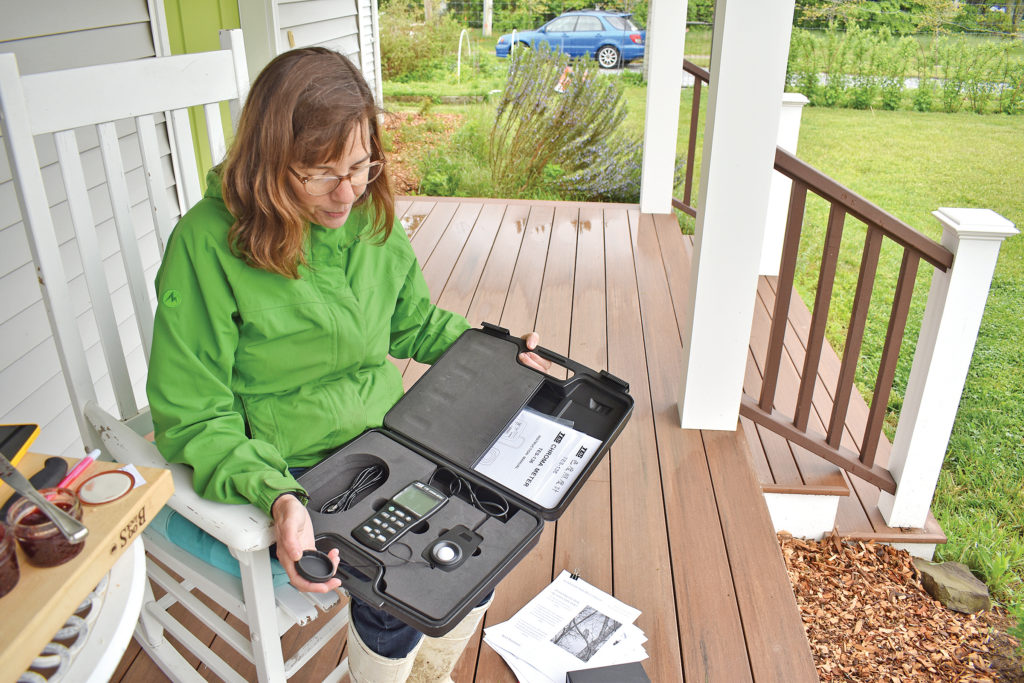
The coalition is born
As a founder of the North Fork Dark Sky Coalition, Mary Eisenstein didn’t start thinking more critically about light pollution until she joined the town Planning Board. That’s when she saw “how much time and attention is given to site plan applications around the lighting code and what has to be done,” she said. So she approached the Mattituck-Laurel Civic Association to host a program on dark sky initiatives. An advocate from the Custer Institute who spoke at the program said his students count fewer stars each year because of light pollution.
Inspired by the lecture, a group of residents quickly formed a steering committee that convinced the Town Board to enact code acknowledging International Dark Sky Week in April. The group went on to launch a new website, organize more educational events, distribute informational mailers and — most recently — work with the town to create letters and placards outlining dark sky code to send to local hardware businesses, security companies, electricians and landscapers.
“It was brought to my attention that there are some wattage bulbs that are higher than the ones that we allow in the town [being sold] in hardware stores. Obviously a private business can sell what they want, but it is not allowed in our code to put them up at a home or a business in Southold,” said Councilwoman Sarah Nappa, the Town Board liaison to the coalition.
The informational placards should now be included with every building application distributed in Southold.
Efforts to protect a dark sky in Southold date back to at least 2010, when the town passed regulations on exterior lighting.
Uplighting is prohibited, for instance. Exterior lighting fixtures installed after the legislation was passed must be fully shielded, and nonessential exterior lighting must be turned off when not in use or within half an hour of a business closing.
The intensity and hue of a light bulb matters, too. An amber or warm white glow is better than blue-white for both people and the environment. Town code enforces this with a maximum color temperature of 3000 Kelvin, a bit cooler than the Dark Sky Coalition’s recommendation of 2200 Kelvin.
The town also regulates lumens, or light intensity, and light trespass.
Susan Harder, New York representative to the International Dark Sky Association, helped write dark sky legislation for towns on the East End, including Southold. Ms. Harder was also involved in the formation of the North Fork Dark Sky Coalition.
“The only people who are against [dark sky code] are people who are just anti-regulation, period,” she said. “Generally, this is very well accepted once people understand the value and importance of it.”
Ms. DeLuca said many people are unaware of the town code, pointing out that visitors or new residents who come from urban areas might not be used to seeing the stars and may be less aware of how to protect them.
“They don’t recognize that me putting all these lights on my house kind of diminishes that view,” Ms. DeLuca said. “It’s just trying to build that connection, because I think that, ultimately, I would assume that most of the people who are here are either coming out here or live here for a lot of the same reasons. They like the open space, they like that it’s quiet.”
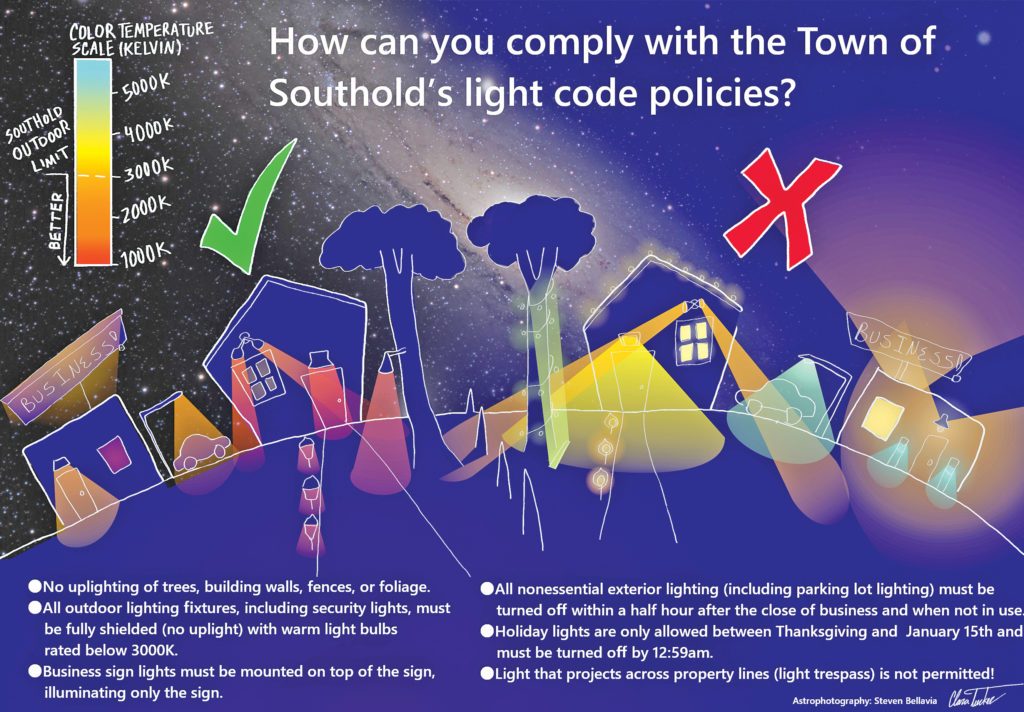
Making a difference
So far, people have responded well to Dark Sky educational initiatives. As Ms. Klahre said, “The science is there, the law is there, and the will is there. It’s just a matter of doing something about it.”
“Most of the people who I interact with, they’re frustrated,” Ms. DeLuca said. At dark sky events, many have responded with an “overwhelming joy” and desire to help that she’s found inspiring.
“I definitely have noticed a lot of community excitement around these things at the events and they’re like, ‘There’s something I can do about it? This is great,’ ” she said.
Ms. Nappa said she’s noticed the coalition’s work educating the public, getting the word out, making a difference.
But Southold still has room to improve. Coalition members say light code violations among residents and local businesses are still very common, more than a decade after the town passed exterior lighting regulations. Activists have pointed out that even Times Review Media Group, publisher of The Suffolk Times, is out of compliance with an uplit sign outside its office on Main Road in Mattituck.
Part of the coalition’s efforts in 2022 have been aimed at addressing light code violations in town. “The North Fork Dark Sky Coalition would like to see Chapter 172 enforced throughout the town, not solely based on code violation complaints,” Ms. Klahre said.
The Town Board agreed in February to focus on code enforcement, in addition to complaints, in a targeted area, she added. In March, the coalition suggested focusing on a one-mile radius around the Custer Institute — Long Island’s oldest public observatory, which draws visitors from all over the world.
Each violation, according to town code, carries a fine of $250 per day for residents and $750 per day for commercial violators. Ms. Klahre said she doesn’t know of anyone who has been fined, and said only a portion of code violators reported by the Dark Sky Coalition have since come into compliance.
Ms. Klahre also pointed out True Light Church, a little more than a quarter mile from Custer Institute, as a light code violator, with unshielded exterior lighting left on for more than a half-hour after closing. The coalition filed a complaint with code enforcement but has not seen results yet, she said.
Coalition members are focused on lobbying the Southold school district — another Custer neighbor — to address light code violations. Ms. Klahre first approached the district at a Jan. 26 Board of Education meeting to read a letter from the coalition pointing out light code violations on school grounds and buildings.
Board members thanked her and said they’d look into her suggestions, but told her when she followed up at an April meeting that “things in a school district take months if not years to happen.”
“The only people who are against [dark sky code] are people who are just anti-regulation, period.”
Susan Harder, International Dark Sky Association
Superintendent Anthony Mauro said he’d contacted the district architect to evaluate lighting on the campus, and noted that the district needs to comply with state Department of Education guidelines as well. He did not yet have a timeline for when changes would be made.
Mr. Mauro told The Suffolk Times that the district is working to come into compliance with town regulations.
“Some of those lights, I believe, belong to the power company, not just Southold, so we’ve reached out to them and they’re going to come and evaluate them and see what they can do as far as brightness and things like that,” he said.
Frustrated by a lack of progress, the coalition submitted a code complaint about the school district in late July.
The North Fork Dark Sky Coalition has also been advocating for the town to address several PSEG lights along Route 25 and Sound Avenue that violate local light code.
Ms. Klahre has criticized the electric company for allowing private use of public utility poles through its “Dusk to Dawn” program, which mounts lights on utility poles at customer request. She contends that the additional lights violate the New York State Scenic Byways Act, which is meant to protect rural roads like Sound Avenue. She measured a few PSEG lights along Main Road with Suffolk Times reporters, to demonstrate their noncompliance with town code.
Ms. DeLuca, while discussing the code violations, said that PSEG has been supportive in past environmental initiatives; they’ve helped restore the osprey population, for example, by relocating nests from electric poles to protect the birds from high voltage systems.
“They do seem to be interested in trying to do the right thing. It’s just trying to get everybody in the room to figure out the best strategy forward,” Ms. DeLuca said.
PSEG Long Island said in a statement that the company created a “Dusk to Dawn” lighting program a few years ago “in an effort to offer a higher level of security and enhance the look of property.” According to their website, the program “offers hassle-free utility pole-mounted LED or High Pressure Sodium fixtures with one monthly bill.”
“If customers notify us that they no longer want the service, we will remove the fixtures. If there are customers in the Town of Southold that no longer wish to participate in the program, they can contact the Dusk to Dawn hotline at 516-949-2020 to be removed,” a spokesperson said.
Despite ongoing violations, Dark Sky Coalition efforts have seen results elsewhere in town.
Mattituck Park District installed dark sky-friendly lighting earlier this year, just a month after speaking with coalition members, for instance. The Southold Indian Museum also opted to avoid adding exterior lighting last spring after coalition members pointed out the potential impact the lights could have on sky-gazers at the nearby Custer Institute.

“Every chemical in your body came from a star. We’re built from the universe.”
— Steven Bellavia
Photo by Jeremy Garretson
A brighter future
It’s a Saturday night in Southold and the sky is clear. It’s perfect weather for the stargazers gathering in a field outside the Custer Institute.
Mr. Bellavia has already set up his telescope in the field near the outbuilding. He gives tours of the observatory as the afternoon fades to dusk: here’s the room dedicated to radio astronomy; here’s the grinding room for telescopes. There’s the telescope he made in the shed.
“Think about what’s in your body, like the calcium in your bones, the iron in your blood,” he says. “Every chemical in your body came from a star. We’re built from the universe. We’re not just spectators; we’re participants.”
The field outside becomes more crowded as the sky darkens, with amateur astronomers setting up equipment that has cost some of them thousands of dollars. One stargazer pulls out a giant set of binoculars.
The street surrounding the observatory is dark. A small and passionate group of local volunteers aims to keep it that way.



